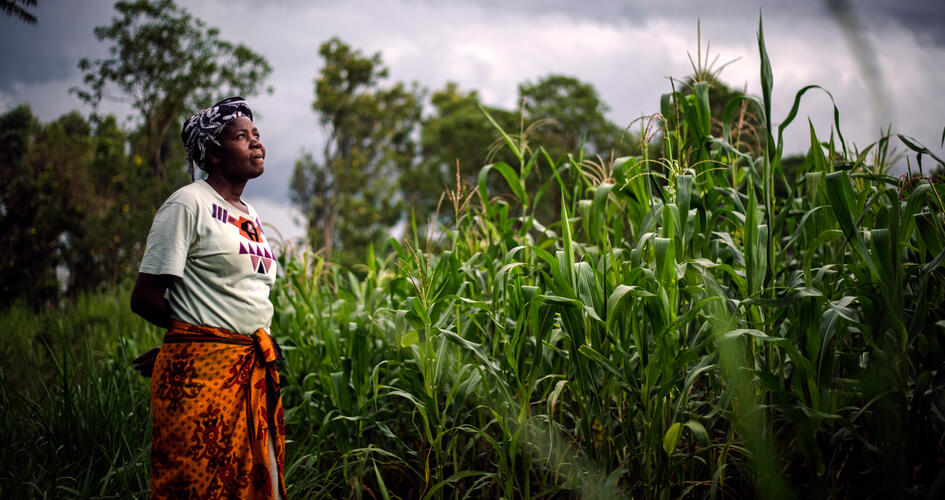Anastancia Were Kulundu
Meet the people behind Action Africa, the initiative that enables 250.000 farmers, together with Yara, feed one million people for one year in East Africa.


Working on the farm with her bare hands, the direct sun making the sweat run down her face, Anastancia is smiling big, her positive and glowing personality clear even to people who do not know her. Even as she works hard to manage the everyday, she does it with a smile, her bright headscarf pushing back her hair from her big brown eyes. “My name is Anastancia Were Kulundu. I live with my biological parents, we are partnered together in the farming venture. I’m also a parent. I have 2 children, a boy and a girl.” As we talked, the sound of birds and cows in the background, Anastancia sat patiently with her hands in her lap, in spite of being a very energetic person with a lot on her plate.
Anastancia works a day job from Monday to Friday as an Administrative Assistant for the Luhya Elders Forum here in Kakamega town, Kenya. On the evenings and Saturdays, she works at her farm, and on Sundays she is a volunteer Catholic teacher for the kids in Sunday School. But she is never truly free from the farm, always making sure that everything is going properly and that the harvest has been stored well, while dealing with any of the many problems that may come up. Anastancia is not married, and therefore it is her responsibility to work to earn money while making sure that there is food on the table for her family. Her daughter is in college, and she hopes her son, who has just completed high school, will be joining his sister at college soon.
For Anastancia, the farm plays many roles in her life. It not only provides food, it is also a source of income and a connection between her and her parents. It is key to securing her children’s future, and it is a fulfilling livelihood she finds very important for her wellbeing and to teach her children. “I’d want to pass down the knowledge of farming, on top of being a professional in other fields. Farming is most important for the human race.”

“Farming has been a good supplementary to my day job, because from the sale of the maize I have been able to pay for my children’s school fee.”
Anastancia’s farm covers about one and a quarter acre. Together with her parents, Anastancia has planted maize, cassava, groundnuts, and bananas. Her aspiration is to become a large-scale farmer, with even more acres of land to plant maize, providing her with a greater harvest. In a place where everyone lives with the anxiety of not having enough food to fill all the mouths, her main aim as a farmer is to never be lacking food in the household at any time.

Even though she is an attentive farmer, Anastancia experiences real barriers to success, and can’t rely on expecting a good harvest. One of her biggest hurdles is access to fertilizer. Most times she risks not having enough money to buy the needed fertilizer or the seed when she needs it, which has a huge impact when it is time to reap. Another hurdle is predicting and preparing for something she cannot control – delayed or missed rains. Now that Anastancia is a part of Yara’s Action Africa initiative, she will receive hyper-local weather notifications that can help her plan with more certainty, and she could in the future have access to financial support that can help her afford the inputs she needs at the right time.

Luckily, the ongoing challenges have not yet stopped or destroyed Anastancia’s farm, and the community has taken notice of her successes. As a result, she has started training her friends and neighbours from the community so they can all benefit from her knowledge and experiences.
Indeed, Anastancia is seen as a respectable woman who respects others and loves people both young and old. Her sense of responsibility and commitment to her community is clear when she talks about her plans for the future. “I’d really want to improve the living standards in this homestead. Since I was young, I remember where we have come from, I’ve done a lot to improve it, and I desire to do more to improve the farm and our living standards.”
Related articles
























































